Students Bridge Campuses, Cultures, and Communities with Hands-On Learning in India
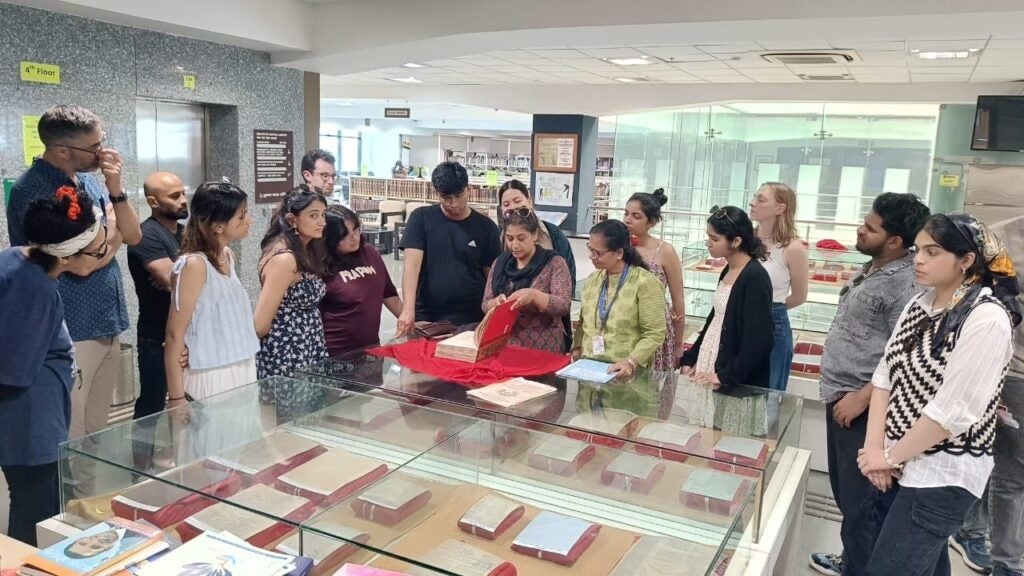
Ten Georgetown University students from campuses in the United States and Qatar recently came together in India for an immersive research experience as part of the interdisciplinary course Indian Ocean Research Colloquium.
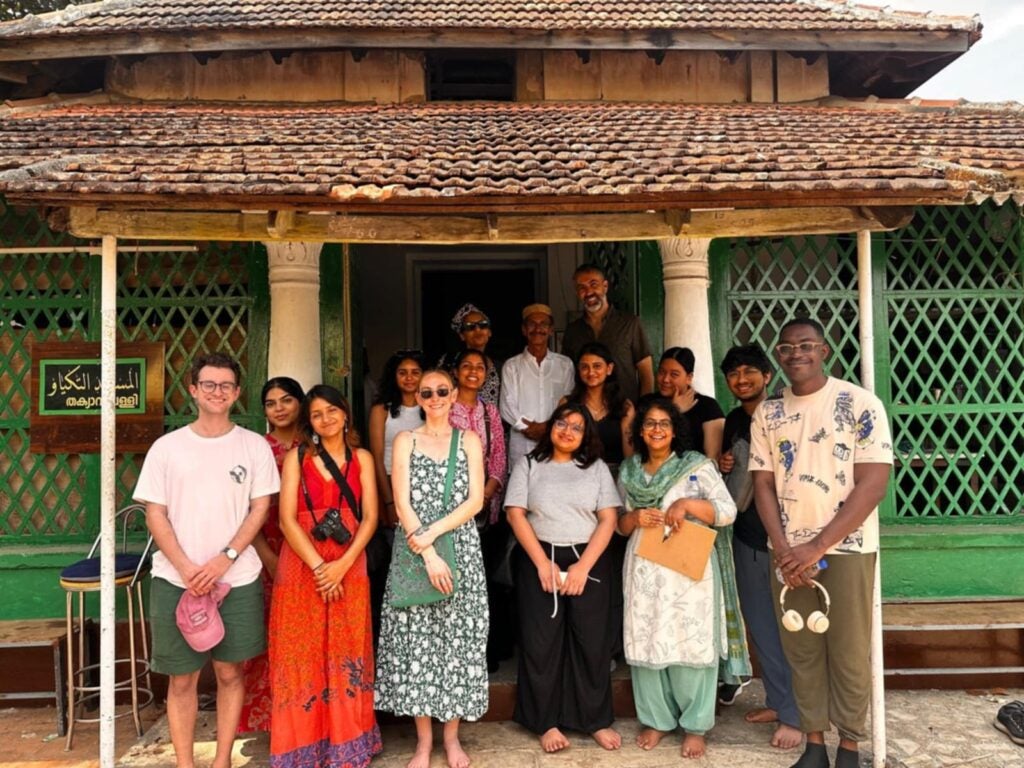
Group photo at Masjid At-Taqiaf
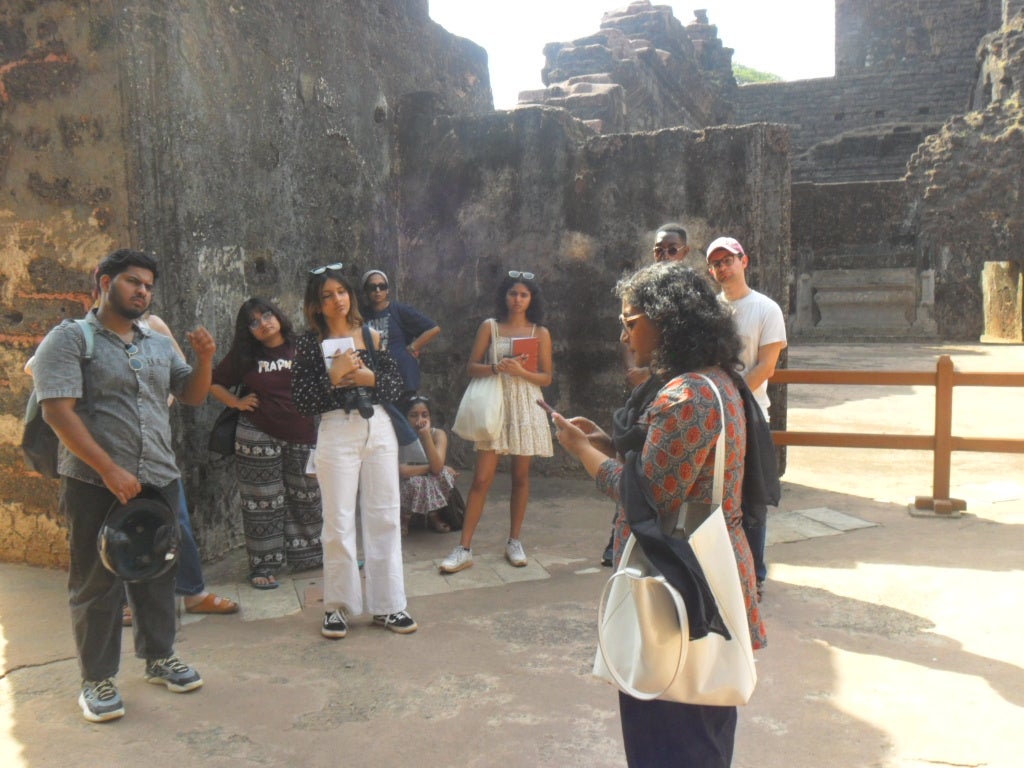
Discussion at ruins of Augustinian Convent, Old Goa, photo taken by Ananya Shah
Taught simultaneously across continents, the two-semester-long course explores the cultural, historical, and social dynamics of the Indian Ocean world through the combined lenses of history, literature, and anthropology.
Students enrolled in the jointly offered course furthered their learning by spending a week in Goa and Kerala. Accompanied by their professors, they visited sites of religious, cultural, and historical importance. For many tourists to India, it is a land of historical wonders. “From a 12th century synagogue in Kochi to grand historic mansions that are testament to the wealth and power of the Portuguese empire in Goa, the students witnessed a huge swathe of the past,” shared Professor Chakravarti, adding: “At the same time it was important that the students understand that India is a complex modern nation.”
During an early morning visit to a deep-sea fish auction, students spoke to the fishermen driving the economy of modern Kochi. Meetings with artists, academics, archivists and publishers gave students a glimpse of the cultural and intellectual life of contemporary Goa.
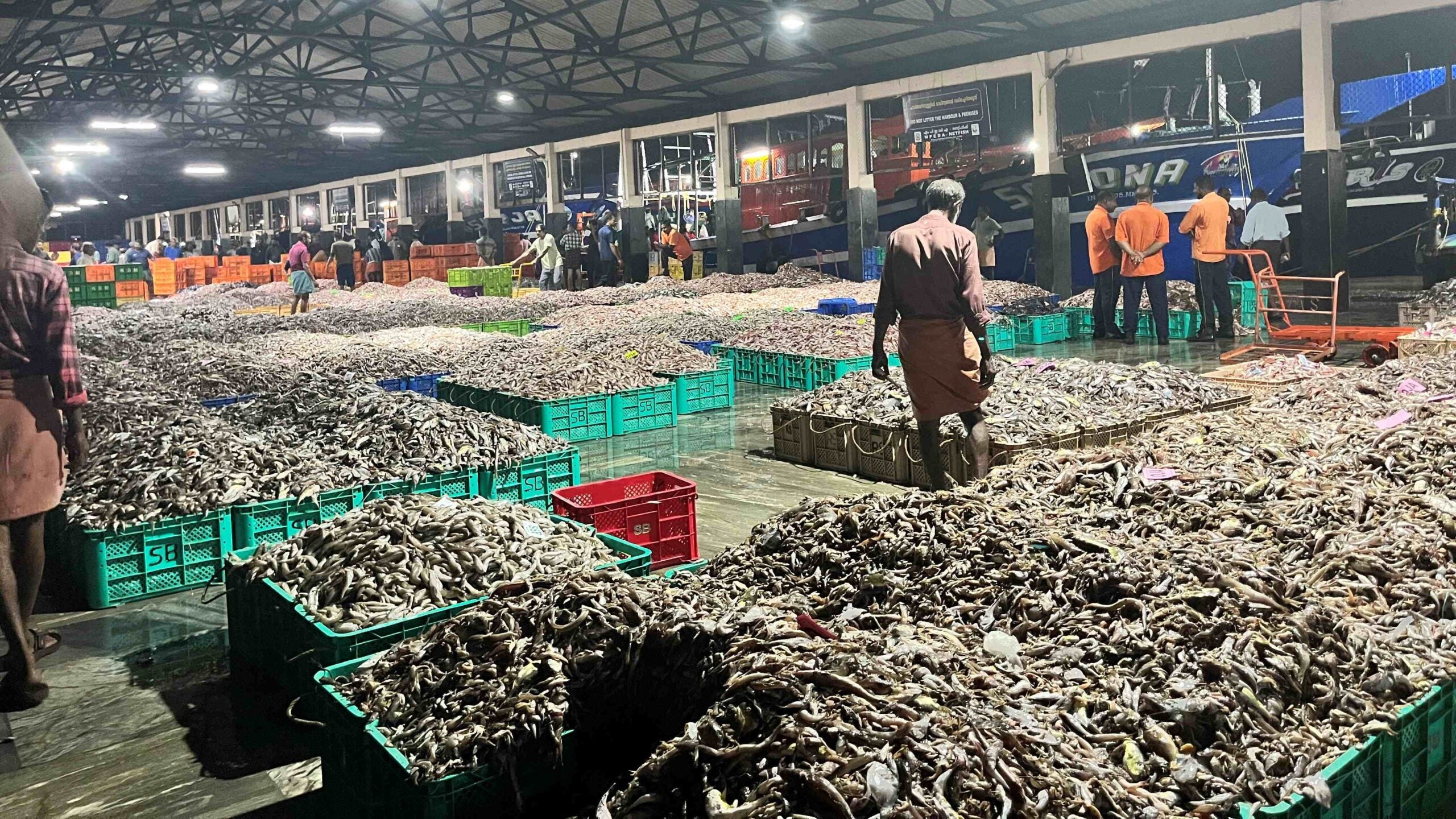
Deep sea fish auction, Munambam, Kerala, photo taken by Ananya Chakravarti
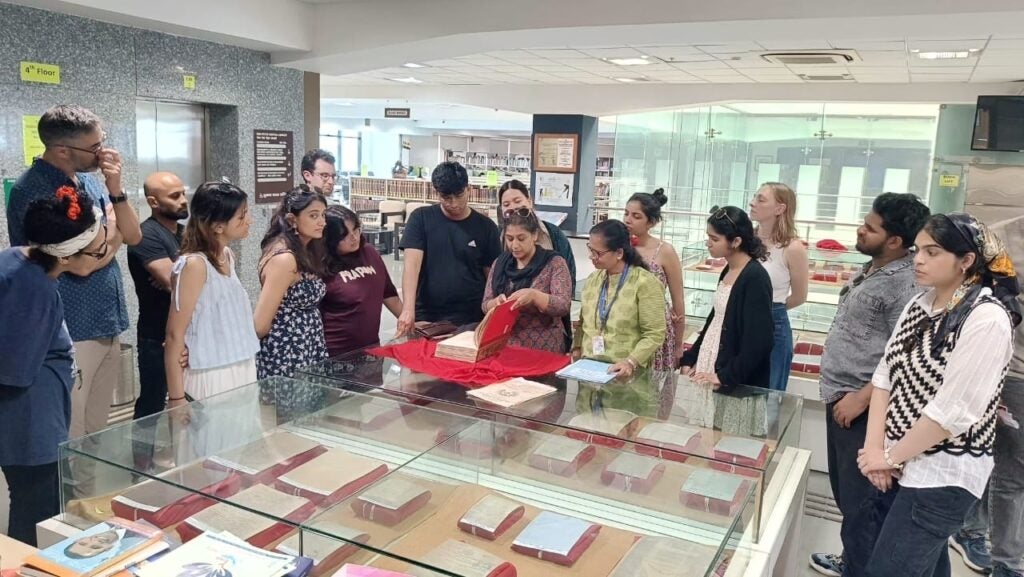
Professor Chakravarti reading manuscripts held at the Krishnadas Shama Goa State Central Library, Panaji, Goa, photo taken by Central Library staff
Hands-on Learning
“During our visit to the Goa Central Library, I spoke with a researcher at the National Institute of Oceanography, the central focus of my research project, allowing me to understand the state of science and scientific education today,” said DC campus student Jyotsna Venkatesh.
Now, when conducting my research on the geopolitics of science in the Indian Ocean, I have a strong understanding of what investments in science look like at a local level in contemporary India.”
Ananya Shah, whose paper focuses on contemporary Goan literature, said: “Prior to the trip, I could picture a landlord barking orders in an unformed, shadowy Goan estate, but now, I can picture the ornamental vases, tablecloths, and carvings. Now I can understand the amount of labor it would take to maintain an aristocratic estate.”
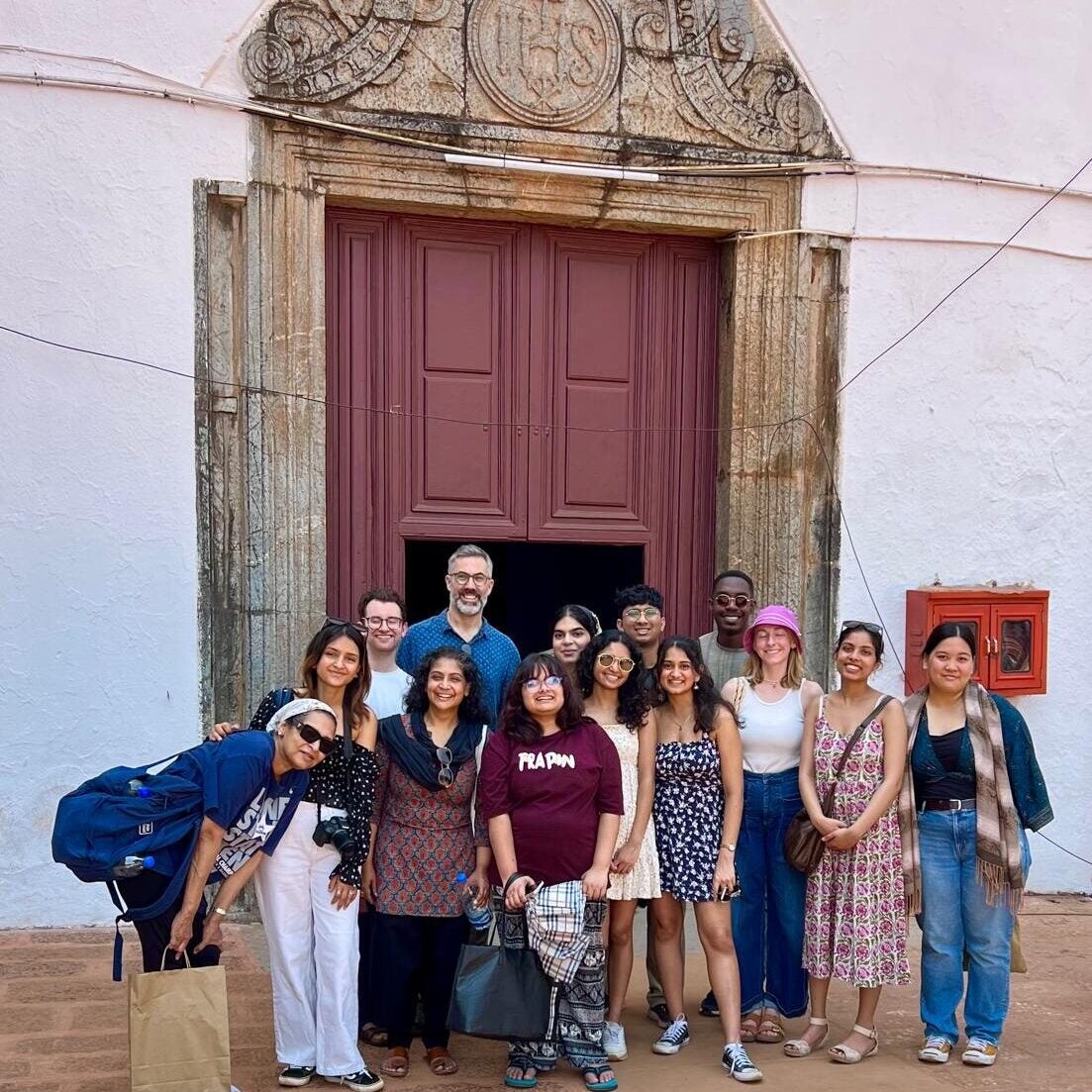
Group Photo of Students with their professors in front of Basílica do Bom Jesus, Old Goa, where the body of St. Francis Xavier, the Jesuit missionary, is interred.
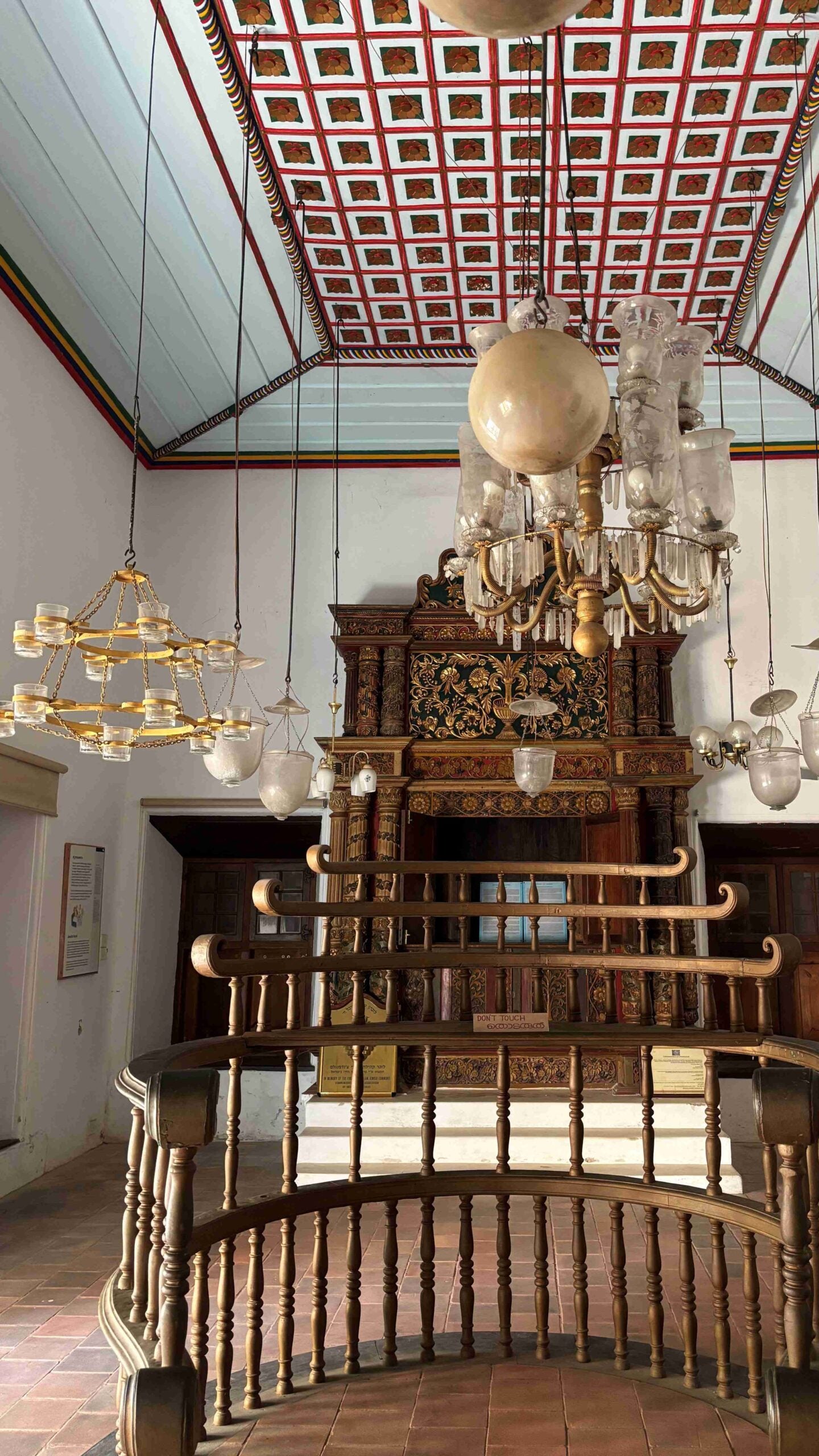
Chennamangalam synagogue, photo taken by Alyssa Kristeller
Immersion in these locales also deepened the students’ understanding of their research topics. For Alyssa Krysteller, who is studying Jewish life in Kochi, “Being able to stand next to Namya Mutta’s tomb, winding through the narrow pathways to get there, and seeing children playing in the street nearby, was one of my favorite moments of the trip, even if a brief one. I had spent nearly the entire year reading and writing about the monument and what it meant for the ancient Jewish community of Kerala as well as the present-day neighborhood around it. Then I got to see it in real life.”
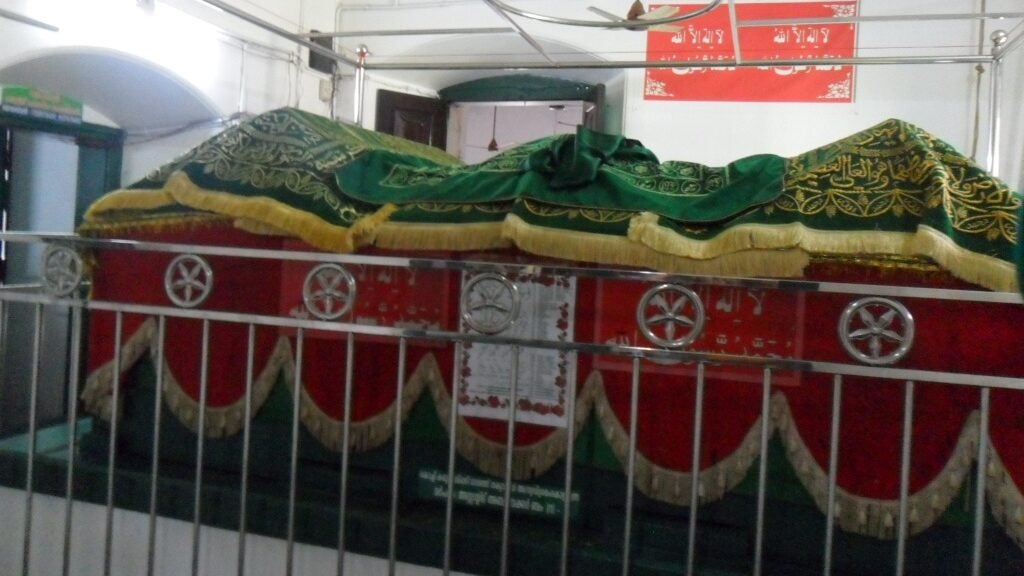
Shrine of Bamp Thangal, photo taken by Ananya Shah
Tasneem Ghadiali connected discoveries during her visit to her own heritage. Writing about the shrine of Baamp Thangal in Kochi in her travel journal, she reflected: “Immediately, these tombs reminded me of those in Gujarat and outside of Bombay, within my own community. That is because ancestors from my community came from Yemen…They established trading ports in Surat, Mumbai, Kerala, and even in East Africa. That’s why similar tombs exist across the Indian Ocean Islamic World.”
Russell Niglo Adzedu (GU-Q’25) spent his time exploring the complex history of this coastal region for his paper on how a group of Indians of African descent, the Siddi, are portrayed on film. His travel journal discusses the erasure of black history in tourist sites, including Kerala’s Jewish Quarter, and Portuguese mansions in Goa. “I found that the way these cities construct their historical narratives often exclude key contributors to their formation—including enslaved people,” he noted.
Travel journal entry by Russell Adzedu, GU-Q
Travel Journal of Manha Siddiqui, GU-Q
Travel journal entry of Ishan Datey, DC Student
I took the course because I am minoring in Indian Ocean Studies, and am really interested in South Asia in particular,” said Cindrella Pant (GU-Q’27).
“One of the observations I made is that there is a lot of hatred towards tourists, who are known for just taking pictures of the beaches and then going away. Goa is very beautiful, but it also has a dark history. My research is on how that is being remembered.”
Cross Campus Exchange
The trip also fostered rich intellectual exchange between the students themselves who brought different regional insights and academic backgrounds to their work. Culture and Politics major Manha Siddiqui took the first course while studying on the DC campus in the Fall, furthering her study of the region, while still remaining connected to her classmates in Doha. She enrolled for the second semester in Doha. “The opportunity to learn from three different professors motivated me to join the course,” she said.
For other students, the first time they met in person was in India. “Although we had been in classroom discussions together, we didn’t really know each other,” Cindrella shared. “We talked about how we were surprised by the personalities of the others when we got to know each other. That didn’t translate through the screens.”
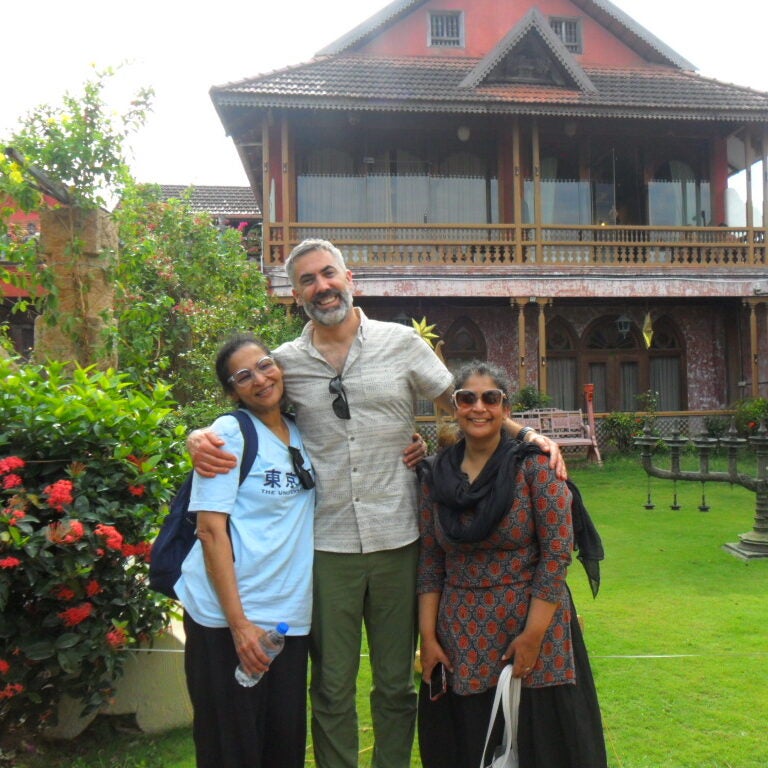
Professors Abusharaf, Parsons, and Chakravarti
The Indian Ocean Colloquium is taught by Georgetown University faculty members Dr. Rogaia Abusharaf, who teaches in Qatar, and Dr. Coilin Parsons and Dr. Ananya Chakravarti who teach in Washington, DC.
Together they were awarded the Sonneborn Interdisciplinary Collaboration Chair from the Office of the Provost, which has enabled them to advance collaborative work in Indian Ocean Studies that the trio have been engaged in for nearly a decade. This year they organized a student research conference and designed and taught this course, with a number of other research and teaching projects planned over the next two years.
The trip was really beneficial to the students, who learned how to ask meaningful questions, how to talk to people with humility and curiosity, and how to recognize what is significant in the everyday– which helped them link their observations to broader course themes” said Dr. Abusharaf, adding: “It was such a success and they learned so much from the other professors and each other, I am really looking forward to continuing this work.”
“Seeing how people lived, and the artifacts in museums, really helped me understand my readings,” said Cindrella. “Since I returned back, I’ve had a completely different understanding now that I could picture the place, and had seen the material evidence with my own eyes.”
The Indian Ocean Colloquium field study exemplifies Georgetown’s commitment to cross-campus collaboration, experiential learning, and innovative research. It also comes as Georgetown University in Qatar celebrates its 20th anniversary, marking two decades of academic excellence, global engagement, and contribution to knowledge in the region.